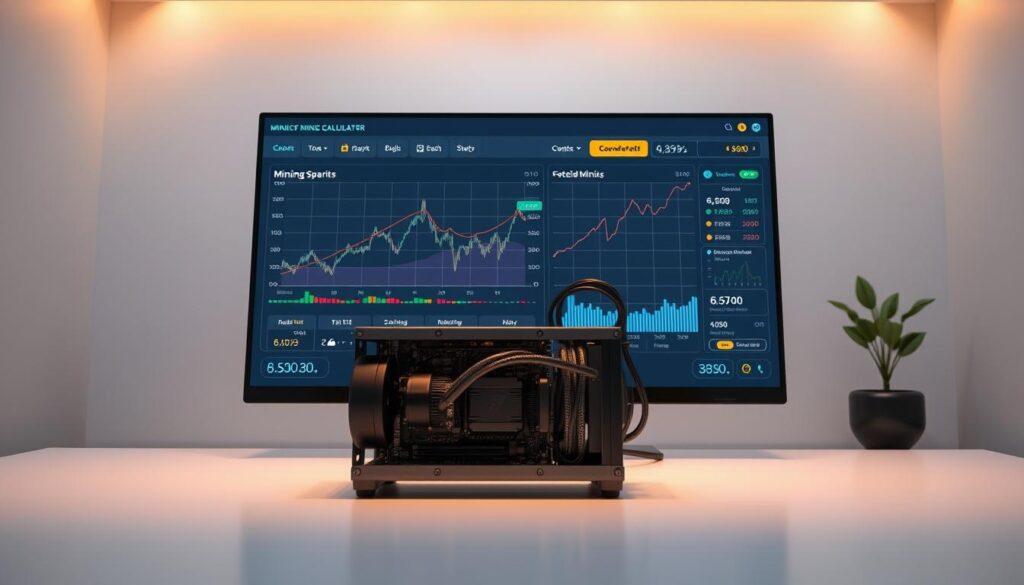Now Reading: Effective Cryptocurrency Volatility Risk Management Strategy
- 01
Effective Cryptocurrency Volatility Risk Management Strategy
Effective Cryptocurrency Volatility Risk Management Strategy

Navigating the world of digital assets can feel like a wild ride. Prices can change dramatically in very short periods. This guide provides a clear path to building a solid plan for your investments.
Unlike stock markets, the crypto space never closes. There are no built-in safety nets to pause trading during extreme moves. This puts the responsibility for safeguarding your capital squarely on your shoulders.
We will walk you through the essential steps. You will learn how to understand market behavior and assess your personal comfort level. We will also explore modern tools, like smart contracts, that can help automate protection.
By the end of this article, you will have a practical framework. This approach helps shield your portfolio from severe downturns. It also promotes a disciplined mindset that works in any market condition.
Key Takeaways
- Digital asset markets operate 24/7 without the safety features of traditional finance.
- A structured plan is essential for protecting your capital from sudden price swings.
- Understanding your personal tolerance for market movement is a critical first step.
- This guide blends time-tested principles with innovative, crypto-specific techniques.
- The goal is to build confidence and reduce exposure to significant financial loss.
- Both new and experienced traders can benefit from refining their approach.
Understanding Cryptocurrency Market Volatility
Unlike conventional financial markets that follow set schedules, digital exchanges never close. This continuous operation creates unique patterns in price behavior that every investor should understand.
Market Dynamics and Price Fluctuations
The crypto space operates across global platforms without closing bells. Large orders can create significant price movements when liquidity is thin. This happens often during overnight hours in major financial centers.
Major announcements and regulatory developments trigger rapid price changes. Understanding these crypto volatility patterns helps anticipate turbulent periods. Traders can then adjust their approach accordingly.
| Market Feature | Traditional Markets | Crypto Markets |
|---|---|---|
| Trading Hours | Set business hours | 24/7 operation |
| Liquidity Levels | Generally high | Variable by token |
| Price Movement Speed | Moderate pace | Rapid fluctuations |
| Event Impact | Predictable response | Immediate, sharp moves |
Impacts on Trading and Capital Preservation
Sharp price swings can quickly affect open positions. Leveraged trades face immediate liquidation risks during sudden moves. Emotional decisions often compound financial losses.
Protecting your investment becomes crucial during turbulent periods. Traditional buy-and-hold approaches may not work well here. Implementing proper safeguards helps maintain portfolio value against crypto-specific risks.
Defining and Assessing Your Risk Tolerance
Before placing any trade, you must honestly evaluate your personal comfort with potential financial swings. This self-awareness is the bedrock of a sustainable plan. It determines the amount of capital you can allocate without losing sleep.
A mismatch between your personality and your actions often leads to poor decisions. These include panic selling during downturns or revenge trading after a loss.

Identifying Personal Risk Profiles
Your profile is unique. It is shaped by your age, income stability, and investment timeline. Past experiences with losses also play a major role.
Ask yourself critical questions. How did you react when your previous investments lost value? Your honest answers will place you on a scale, such as low, medium, or high tolerance.
This clarity directly influences your choice of digital assets. Conservative profiles may prefer established names. More aggressive individuals might explore newer options with higher potential swings.
Establishing Clear Risk Limits
Turn your profile into concrete rules. A fundamental rule is to risk only a small percentage of your portfolio per trade. Many experts suggest 1-2%.
This limits your exposure and protects your capital during turbulent periods. You should also set daily or weekly loss limits. These thresholds force you to pause and reassess if things go wrong.
Write these rules down during calm moments, not amid market chaos. For a deeper dive into this process, consider this resource on understanding your investor comfort zone. Regularly revisiting your limits is crucial as your life and the markets evolve.
Implementing a Cryptocurrency Volatility Risk Management Strategy
Creating a robust system for safeguarding your crypto investments demands an integrated approach. This involves combining multiple protective measures rather than relying on any single technique.
Layered protection addresses various scenarios that could impact your holdings. Each component serves a specific purpose in the overall framework.
Key Elements of the Strategy
Stop-loss orders automatically exit positions when prices reach predetermined levels. This removes emotional decision-making during market turbulence.
Position sizing limits exposure to 1-2% of your total portfolio per trade. This formula protects capital even during extended losing periods.
Diversification spreads investments across various digital assets with low correlation. This reduces concentration in any single holding.
Real-World Examples and Case Studies
Traders who implement disciplined systems often survive bear markets intact. They remain positioned to capitalize on recovery opportunities.
Those without structured approaches frequently suffer permanent capital loss. Emotional reactions compound financial setbacks during volatile periods.
Integrating Risk Management with Portfolio Diversification
Monthly rebalancing takes profits from outperformers and reallocates to undervalued assets. This systematic approach reduces exposure at peaks.
A practical allocation might include 50% large-cap assets, 20% mid-cap options, and 20% stablecoins. The remaining portion could target high-growth opportunities.
Leveraging Smart Contracts for Automated Risk Control
Self-executing code provides a new layer of defense in the digital asset space. These automated agreements execute actions based on predefined rules.
They bring a level of precision and speed that manual methods cannot match. This technology is fundamental to modern protection systems.

Fundamentals of Smart Contracts in Crypto Risk Management
Computer scientist Nick Szabo first envisioned these contracts in the 1990s. The concept became practical with Ethereum’s launch in 2015.
The code contains all the terms and conditions. It triggers automatically when specific requirements are met, removing the need for intermediaries.
This reduces counterparty exposure and human error. It creates a trustless system for enforcing agreements.
Automated Safeguards during Market Crises
These contracts excel during turbulent periods. They activate fail-safes instantly without human intervention.
This helps prevent broader system failures when conditions deteriorate rapidly. They manage several key areas of exposure:
- Credit Exposure: In lending platforms, they enforce collateral requirements. If collateral value falls below a set level, automatic liquidation occurs.
- Concentration Exposure: They can limit the maximum exposure any single entity can hold within a protocol.
- Liquidity Exposure: On trading platforms, algorithms adjust prices to maintain smooth trading flow.
Price-trigger mechanisms can execute sell orders if an asset drops below a specified price. This offers 24/7 protection against sudden market events.
Tools and Best Practices in Digital Asset Risk Management
Implementing proper safeguards requires the right combination of specialized tools and established practices. This systematic approach helps investors navigate the complex landscape of digital holdings.
Risk Assessment Tools and Trading Platforms
A multi-tiered storage plan forms the foundation of security. Allocate less than 5% of holdings to hot wallets for daily use. Store the majority in hardware cold storage for maximum protection.
Major trading platforms offer advanced features for disciplined investors. Services like recurring buys automate dollar-cost averaging strategies. This removes emotional timing from investment decisions.
| Storage Type | Recommended Allocation | Primary Use Case |
|---|---|---|
| Hot Wallet | Under 5% | Daily trading and transactions |
| Cold Storage | Majority of funds | Long-term capital preservation |
| Multi-signature | Institutional holdings | Enhanced security protocols |

Conduct quarterly assessments of your security setup. Check device firmware and backup procedures regularly. Spread funds across multiple exchanges to minimize platform exposure.
Fundamental analysis tools provide essential data for informed decisions. Combine these resources with a structured crypto portfolio management approach. This creates a comprehensive framework for capital protection.
Adapting to Market Changes and Regulatory Conditions
Government policies can reshape the entire crypto landscape overnight. These shifts create new challenges for participants in this space. Staying informed helps you navigate these evolving conditions.
Understanding Regulatory Impacts on Crypto Trading
Legal frameworks vary significantly across different jurisdictions. A token legal in one country might face restrictions elsewhere. This affects which assets you can trade on your chosen platform.
Regulatory events can suddenly limit access to certain digital holdings. Some traders focus only on short-term gains while ignoring these potential exposures. This approach can lead to unexpected complications with tax authorities.

Staying Agile in an Ever-Changing Market Environment
Market conditions shift constantly between bullish and bearish phases. A single approach rarely works well across different environments. You must adjust your tactics as these changes occur.
When markets show high volatility or reduced liquidity, consider reducing position sizes. This helps manage risk during turbulent periods. Regular assessments of current conditions keep your edge sharp.
| Regulatory Aspect | Established Markets | Emerging Markets |
|---|---|---|
| Legal Clarity | Clear frameworks | Evolving rules |
| Platform Compliance | Strict requirements | Variable standards |
| Investor Protection | Strong safeguards | Limited coverage |
| Tax Treatment | Defined guidelines | Uncertain status |
Building flexibility into your approach from the beginning creates resilience. This preparation helps you respond effectively when unexpected events occur. The ability to adapt separates long-term participants from temporary ones.
Conclusion
Building lasting success in digital markets requires more than just market timing—it demands a systematic approach to protecting your investments. This comprehensive framework helps you navigate unpredictable conditions with confidence.
The strategies discussed provide practical steps for safeguarding your capital. From personal assessment to automated tools, each component strengthens your overall position. Regular review ensures your approach evolves with changing market dynamics.
True mastery comes from consistent application of these principles. They create a disciplined foundation that withstands turbulent periods while capturing legitimate opportunities. Your written plan becomes your most valuable asset in this dynamic space.
Remember that effective protection is an ongoing process, not a one-time setup. Continuous learning and adaptation separate successful participants from temporary ones in this high-opportunity environment.
FAQ
How can I protect my investments from sudden price swings?
You can protect your digital assets by using several methods. Diversifying your holdings across different types of assets is a strong first step. Setting stop-loss orders on trading platforms helps lock in gains and limit losses. It’s also wise to only use capital you can afford to lose, as this reduces financial pressure during market fluctuations.
What role do smart contracts play in managing my exposure?
Smart contracts automate key actions based on preset rules. For example, they can automatically execute a trade if an asset’s price hits a certain level. This provides automated safeguards, especially during fast-moving events when manual trading might be too slow. Using them on secure platforms like Ethereum can help mitigate risks effectively.
Why is diversification important in the crypto space?
Diversification spreads your capital across various investments. This approach means a price drop in one asset has a smaller impact on your entire portfolio. It’s a core part of many management strategies, helping to smooth out returns and reduce the overall potential for significant losses in volatile markets.
How do changing regulations affect my trading strategy?
New rules from governments can influence market conditions and asset prices. Staying informed about these changes is crucial. A flexible strategy allows you to adapt your approach, potentially moving assets between exchanges or adjusting your holdings to comply with new conditions and seize new opportunities.
What tools can help me assess security and other trading risks?
A> Many exchanges and independent platforms offer built-in analytics. These tools can track price levels, trading volume, and security alerts. Using them helps you make informed decisions, understand market dynamics, and implement risk mitigation strategies tailored to current events.














